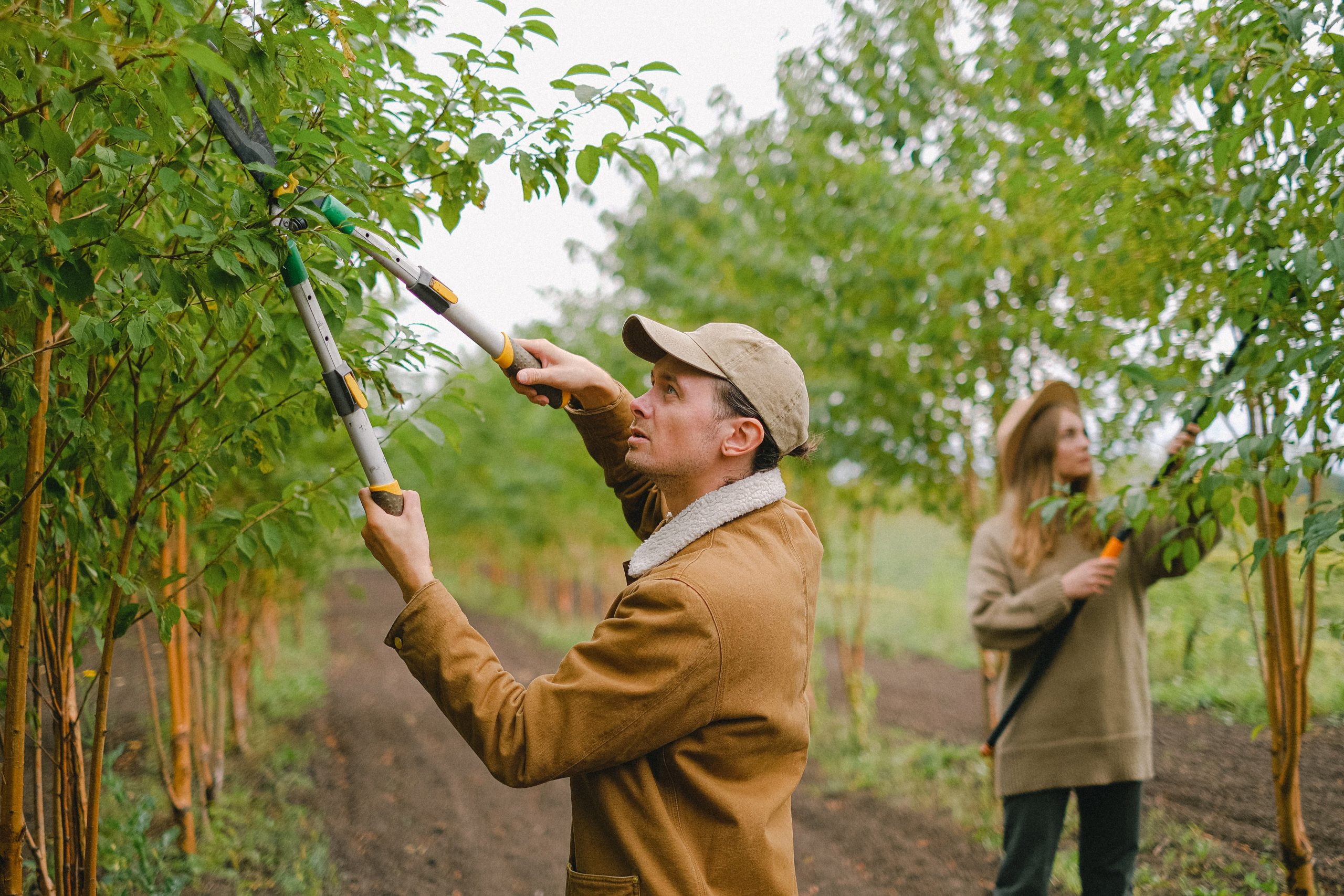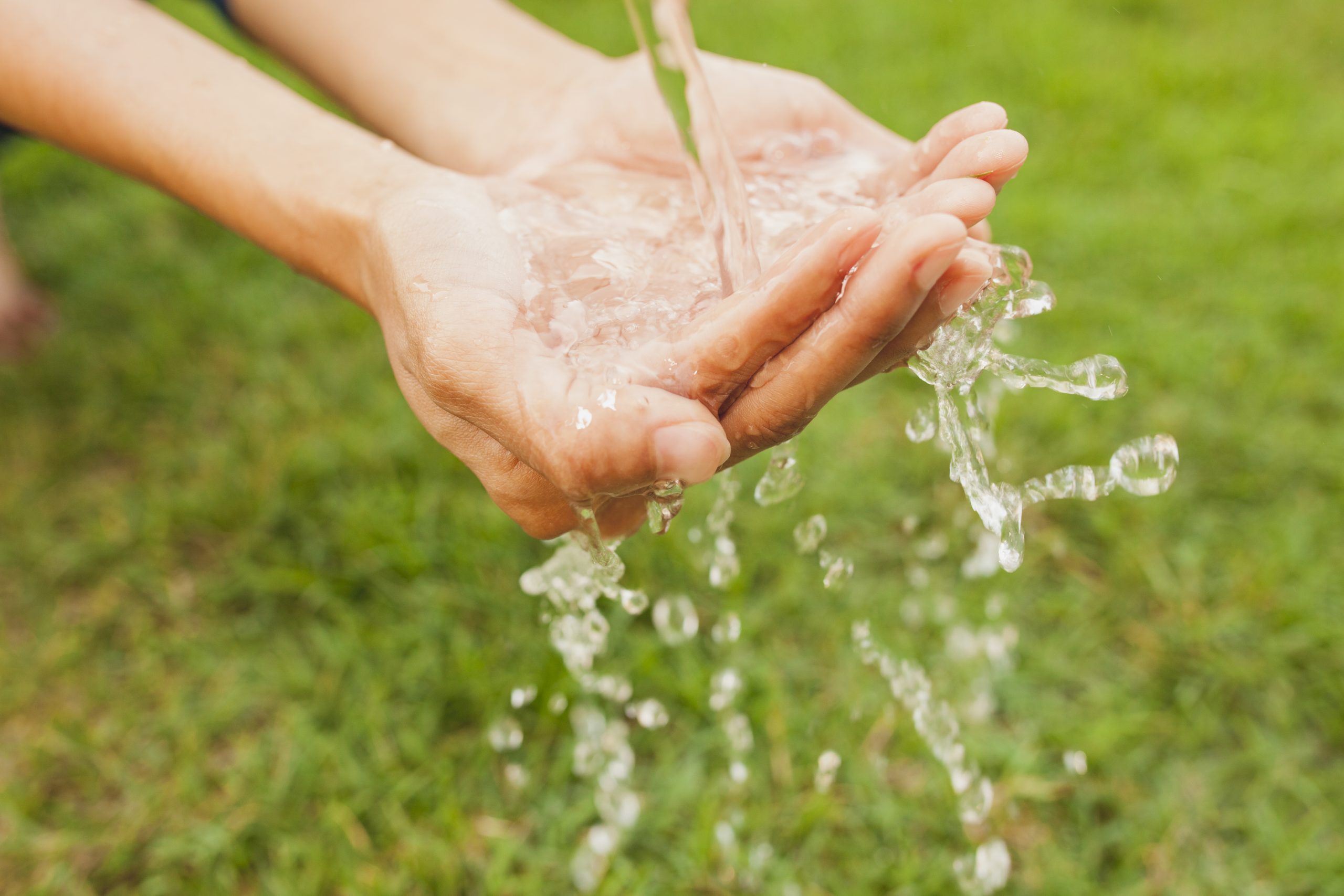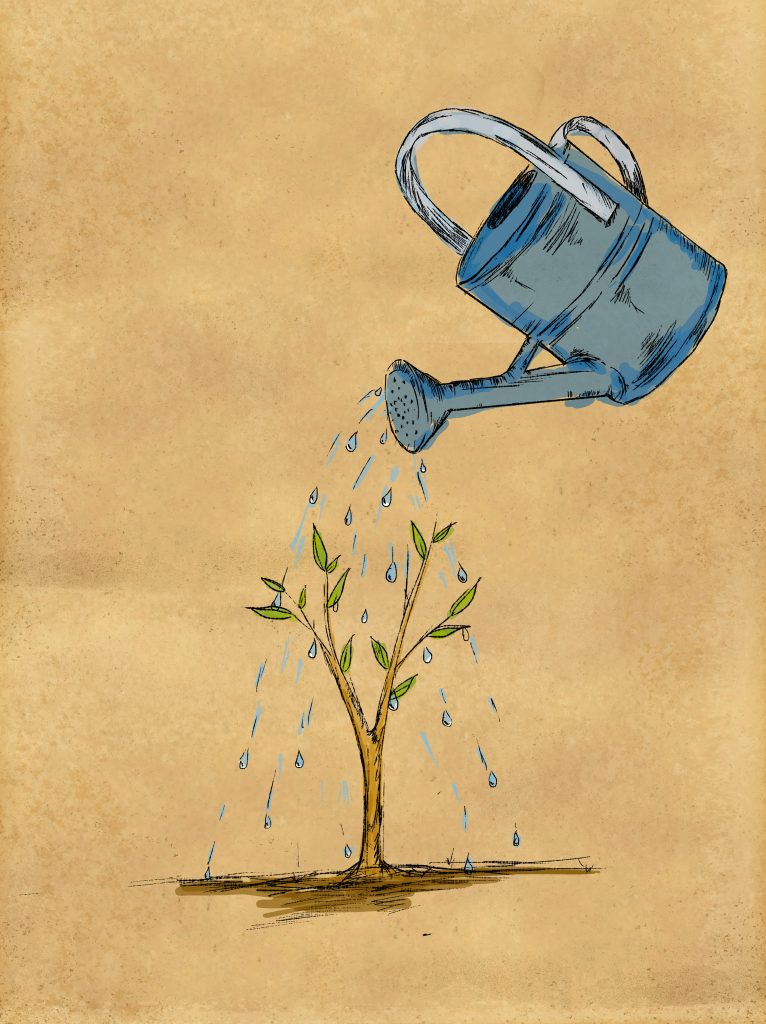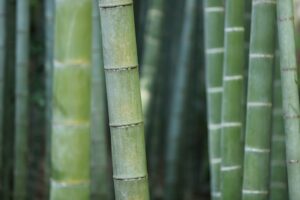THE BENEFITS OF USING ORGANIC TREE CARE METHODS
THE BENEFITS OF USING ORGANIC TREE CARE METHODS
Organic tree care methods involve nurturing and maintaining trees using natural and sustainable practices, without relying on synthetic chemicals or harsh interventions. These methods prioritize the health of trees, the surrounding environment, and the overall ecosystem. Here’s an explanation of some key organic tree care practices:

- Soil Health Improvement: Organic tree care starts with the soil. Healthy soil provides trees with essential nutrients, water, and a stable foundation for root growth. Organic practitioners focus on adding compost, mulch, and other organic matter to the soil. This enriches the soil structure, improves water retention, and promotes the growth of beneficial microorganisms.
- Mulching: Applying organic mulch around the base of a tree helps conserve moisture, regulate soil temperature, and prevent weed growth. As the mulch breaks down, it also contributes nutrients to the soil.
- Compost Application: Compost, made from decomposed organic matter, is rich in nutrients and beneficial microorganisms. Applying compost to the soil around trees provides a slow-release source of nutrients, fostering healthy growth.
- Aeration: Soil compaction can hinder root growth and nutrient uptake. Organic tree care involves aerating the soil, which loosens compacted soil and enhances oxygen exchange to the roots.
- Pruning: Pruning is an important aspect of tree care. Organic pruning focuses on selective removal of dead, diseased, or crossing branches, promoting better airflow and reducing the risk of diseases.
- Integrated Pest Management (IPM): Organic tree care emphasizes using natural predators, beneficial insects, and other non-chemical methods to manage pests and diseases. This approach maintains a balance between pests and their natural enemies, reducing the need for synthetic pesticides.
- Natural Fertilization: Instead of using synthetic fertilizers that can lead to nutrient imbalances, organic tree care relies on slow-release natural fertilizers like compost and well-rotted manure. These feed the tree over time without causing rapid growth spurts.
- Water Management: Organic practitioners aim to conserve water and use it efficiently. Techniques like deep watering and using soaker hoses can ensure that trees receive adequate hydration without wastage.
- Companion Planting: Some plants can benefit trees by attracting beneficial insects or fixing nitrogen in the soil. Integrating these companion plants into the tree’s surroundings can enhance overall ecosystem health.
- Preserving Wildlife Habitat: Organic tree care often considers the broader ecosystem. Trees provide habitat for various species. Maintaining a diverse plant and insect population can support the health of the entire ecosystem.
- Avoiding Chemicals: Perhaps the most distinguishing feature of organic tree care is the avoidance of synthetic pesticides, herbicides, and fertilizers. These chemicals can have negative impacts on soil health, water quality, and the health of non-target organisms.
- Holistic Approach: Organic tree care is rooted in a holistic philosophy that views trees as interconnected components of a larger ecosystem. It considers the interplay between soil health, tree health, and environmental sustainability.
By embracing organic tree care methods, individuals, communities, and organizations can contribute to the well-being of trees, the environment, and the overall health of our planet.
Importance of tree care for environmental health and aesthetics
Tree care plays a vital role in both environmental health and aesthetics, offering a range of benefits that contribute to the well-being of ecosystems and human communities. Here’s a closer look at the importance of tree care in these aspects:

Environmental Health:
- Air Quality Improvement: Trees act as natural air filters, absorbing pollutants such as carbon dioxide, nitrogen oxides, and particulate matter. Through photosynthesis, trees release oxygen and help improve air quality, reducing the negative impacts of urban pollution.
- Climate Regulation: Trees play a crucial role in mitigating climate change. They sequester carbon dioxide, a major greenhouse gas, through photosynthesis, thus helping to stabilize global climate patterns.
- Biodiversity Support: Trees provide habitats for numerous plant and animal species. Urban areas with diverse tree populations can harbor a variety of wildlife, including birds, insects, and small mammals.
- Erosion Prevention: Tree roots stabilize soil and prevent erosion. They help retain soil structure and prevent sediment runoff into waterways, protecting water quality and aquatic ecosystems.
- Water Regulation: Trees play a role in regulating the water cycle. They absorb and release water through transpiration, which helps maintain humidity and regulate temperature. This process also contributes to the overall health of watersheds.
- Flood Mitigation: Trees can reduce the risk of flooding by absorbing excess water during heavy rainfall. Their root systems help improve soil permeability, allowing water to infiltrate the ground more effectively.
- Habitat Connectivity: Urban trees create corridors for wildlife movement, allowing species to traverse otherwise fragmented landscapes. This supports genetic diversity and the overall health of ecosystems.
Aesthetics and Human Well-being:
- Visual Appeal: Trees enhance the beauty of landscapes, adding texture, color, and vertical elements that create visual interest. Well-maintained trees contribute to aesthetically pleasing environments in urban and natural settings.
- Psychological Benefits: Spending time in tree-filled environments has been linked to reduced stress, anxiety, and mental fatigue. Trees provide a sense of tranquility and connection to nature, promoting mental well-being.
- Shade and Cooling: Trees offer shade that reduces the urban heat island effect, where cities become significantly warmer than surrounding rural areas. Shade also provides a comfortable environment for outdoor activities.
- Property Value: Properties with well-maintained trees often have higher market values. Trees contribute to curb appeal and create a positive impression, influencing potential buyers and tenants.
- Noise Reduction: Trees can act as natural sound barriers, absorbing and deflecting noise pollution from roads and other sources. This contributes to quieter and more peaceful environments.
- Community Gathering Spaces: Tree-lined streets, parks, and green spaces provide places for communities to gather, socialize, and engage in recreational activities, fostering a sense of belonging.
- Educational Opportunities: Trees offer educational value, serving as living laboratories for schools and communities to learn about biology, ecology, and environmental sustainability.
In summary, tree care is essential for maintaining the health of ecosystems, regulating the environment, and creating visually appealing and psychologically beneficial spaces for humans. Whether in urban or natural settings, investing in tree care contributes to the overall quality of life for both people and the planet.
Environmental Benefits
Environmental benefits refer to the positive impacts that various actions, practices, or policies can have on the natural world, ecosystems, and the overall health of the environment. These benefits are often linked to sustainability, conservation, and the preservation of biodiversity. Here are some key environmental benefits:
- Biodiversity Conservation: Protecting and restoring natural habitats, such as forests, wetlands, and grasslands, helps preserve a diverse array of plant and animal species. Biodiversity is essential for ecosystem resilience and adaptability to changing conditions.
- Air and Water Quality Improvement: Many environmental practices aim to reduce air and water pollution. Planting trees, reducing emissions from vehicles and industries, and minimizing chemical use all contribute to cleaner air and healthier waterways.
- Climate Change Mitigation: Actions that decrease the emission of greenhouse gases (such as carbon dioxide) help mitigate climate change. This includes transitioning to renewable energy sources, increasing energy efficiency, and promoting afforestation and reforestation efforts.
- Soil Health and Conservation: Implementing sustainable farming practices, such as crop rotation and cover cropping, helps prevent soil erosion and degradation. Healthy soil supports plant growth, stores carbon, and filters water.
- Waste Reduction and Recycling: Reducing waste generation, recycling materials, and promoting the circular economy decrease the demand for raw resources and reduce the strain on ecosystems and landfills.
- Habitat Restoration: Restoring degraded habitats, such as degraded wetlands or urban brownfields, can revitalize ecosystems, support wildlife populations, and enhance ecosystem services.
- Conservation of Natural Resources: Responsible use and management of natural resources, such as water, minerals, and forests, ensure their availability for future generations.
- Reduced Deforestation: Curbing deforestation helps maintain carbon sinks, preserve habitats, and prevent soil erosion and land degradation.
- Ecosystem Services: Protecting and restoring ecosystems provides a wide range of services that benefit humans, including pollination, water purification, flood control, and carbon sequestration.
- Preservation of Watersheds: Protecting natural landscapes and wetlands helps maintain healthy watersheds, which are essential for providing clean and reliable water sources.
- Wildlife Protection: Implementing measures to reduce human-wildlife conflicts and protect endangered species helps maintain the balance of ecosystems and protect biodiversity.
- Reduced Chemical Exposure: Minimizing the use of synthetic chemicals in agriculture and other industries prevents harmful substances from entering the environment and impacting ecosystems.
- Sustainable Fisheries: Implementing sustainable fishing practices helps prevent overfishing, maintain marine biodiversity, and ensure the long-term viability of fish populations.
- Energy Efficiency: Reducing energy consumption and transitioning to renewable energy sources reduces the environmental impact of energy production and consumption.
- Sustainable Urban Planning: Designing cities with green spaces, efficient public transportation, and sustainable infrastructure helps reduce pollution, congestion, and resource consumption.
Overall, environmental benefits contribute to the well-being of the planet and its inhabitants by fostering healthier ecosystems, supporting biodiversity, addressing climate change, and ensuring the sustainability of natural resources for current and future generations.
About Murray, Utah
Murray is a city situated on the Wasatch Front in the core of Salt Lake Valley in the U.S. state of Utah. Named for territorial governor Eli Murray, it is the state's fourteenth largest city. According to the 2020 census, Murray had a population of 50,637. Murray shares borders with Taylorsville, Holladay, South Salt Lake and West Jordan, Utah. Once teeming with heavy industry, Murray's industrial sector now has little trace and has been replaced by major mercantile sectors. Known for its central location in Salt Lake County, Murray has been called the Hub of Salt Lake County. Unlike most of its neighboring communities, Murray operates its own police, fire, power, water, library, and parks and recreation departments and has its own school district. While maintaining many of its own services, Murray has one of the lowest city tax rates in the state.
Neighborhoods in Murray, Utah
Murray Oakes, Grant Park, Southwood Park, Murray Park, Murray Park Restrooms, Willow Pond Park, Neighborhood Veterinary Care
Things To Do in Murray, Utah
Bus Stops in Murray, Utah to Truco Services, Inc.
Bus Stop in Murray Central Station (Bay C) Murray, Utah to Truco Services, Inc.
Bus Stop in State St @ 4801 S Murray, Utah to Truco Services, Inc.
Bus Stop in Murray North Station Murray, Utah to Truco Services, Inc.
Bus Stop in State St @ 4949 S Murray, Utah to Truco Services, Inc.
Bus Stop in Murray Central Frontrunner/Trax Station Murray, Utah to Truco Services, Inc.
Bus Stop in Murray Blvd / Vine St (SB) Murray, Utah to Truco Services, Inc.
Bus Stop in State St @ 3925 S Murray, Utah to Truco Services, Inc.
Bus Stop in State St @ 4824 S Murray, Utah to Truco Services, Inc.
Bus Stop in State St @ 5223 S Murray, Utah to Truco Services, Inc.
Bus Stop in Murray Blvd / Allendale Dr (NB) Murray, Utah to Truco Services, Inc.
Bus Stop in Murray Blvd @ 5039 S Murray, Utah to Truco Services, Inc.
Bus Stop in State St @ 4721 S Murray, Utah to Truco Services, Inc.
Driving Directions in Murray, Utah to Truco Services, Inc.
Driving Directions from Woodruff Tree Trimming and Removal to 4640 Commerce Dr, Murray, UT 84107, USA
Driving Directions from Reliable Tree Care to 4640 Commerce Dr, Murray, UT 84107, USA
Driving Directions from Tree Pro-Tech to 4640 Commerce Dr, Murray, UT 84107, USA
Driving Directions from Prestige Tree And Landscape to 4640 Commerce Dr, Murray, UT 84107, USA
Driving Directions from Excellence Tree & Landscape to 4640 Commerce Dr, Murray, UT 84107, USA
Driving Directions from Amen Trees to 4640 Commerce Dr, Murray, UT 84107, USA
Driving Directions from Tim's Tree Care to 4640 Commerce Dr, Murray, UT 84107, USA
Driving Directions from Jordan Tree Service - Murray to 4640 Commerce Dr, Murray, UT 84107, USA
Driving Directions from Arbor Works to 4640 Commerce Dr, Murray, UT 84107, USA
Driving Directions from Diamond Tree Experts to 4640 Commerce Dr, Murray, UT 84107, USA
Driving Directions from Green Tree Arborist to 4640 Commerce Dr, Murray, UT 84107, USA
Driving Directions from TruCo Services to 4640 Commerce Dr, Murray, UT 84107, USA
Reviews for Truco Services, Inc. Murray, Utah
Emily Abercrombie
We had a great experience with TruCo! They were well priced, responsive and prompt. Michael was a pleasure to work with and gave us advice on which plants to put in where we took out our ugly old shrubs. I would highly recommend this company!!!
Michelle Turpin
TruCo Services gets 5 stars from us for customer service. We experienced a few issues with their services this last year and Rob Eccles in senior management, stepped in and immediately handled our issues. He was very committed to making sure they understood our expectations and would execute to make us happy.
Siobhan Billingsley
I work for a property management company and have the pleasure of working with Rob at a community in Sandy. He has been incredible to work with and always responds in a timely manner. He knows all the homeowners by name and address and is aware of all the "problem" areas when it comes to sprinklers. I never have to worry about following up with him because he always reaches out to provide me with an update. If you're looking to work with someone who takes pride in their job, is professional, and can solve the worst landscaping problems thrown your way, Rob is your guy. Thank you, Rob for all you do!
Jaime S.
We have used Truco at 2 of the complexes we manage, they have been great to work with. Good quality service, outstanding customer service with good communication. That's hard to find these days. I highly recommend them. Travis has been awesome to work with.
Jerusha Smart
We use TruCo for a majority of our properties and our home. While other landscaping companies we use come and go for various reasons like cost, communication issues, work performance, etc., TruCo is always consistent in price and work. Also, Rob is the best.






